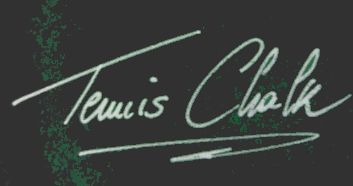The Racquet Club Was Like No Other…
In the 1930s, Palm Springs was a sanctuary for Hollywood stars such as Charlie Farrell and Ralph Bellamy. Farrell, who brought elegance to his roles, and Bellamy, ultimately the Best Supporting Actor Academy Award winner, were not only good friends, they were also ardent tennis players as were fellow actors Peter Lorre and Gilbert Roland. They were the best-known of the movie industry luminaries who escaped to the desert, not because it was the perfect place to “Winter” or because of its embryonic health resort notoriety, but to play … And it seems, they did to the point of being “Court Hogs …” dominating the venue at the El Mirador Hotel, where they stayed.
Deciding that they wanted to have a place of their own, (and the full story is complicated), Farrell and Bellamy bought 52 acres of sand swept desert land and started The Racquet Club. It opened, with two courts, ten days before Christmas in 1934. Tennis enthusiasts were charged a $1.00 to play all day and allegedly on the first day December 15th, $18.00 was collected.
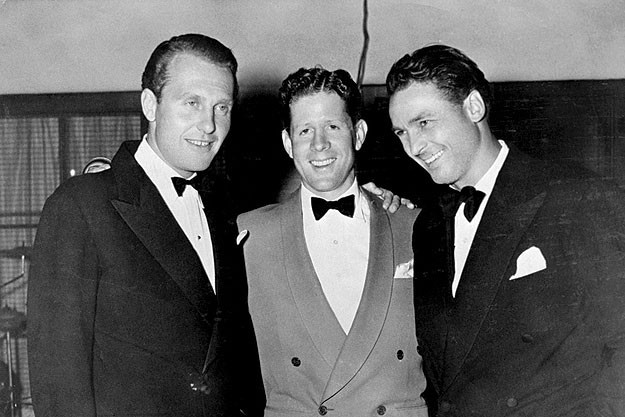
The Racquet Club founders Charlie Ferrell (left) and Ralph Bellamy (right) with Rudy Vallee at the club’s opening.
Photo Palm Springs Life
Joan Crawford, Marlene Dietrich, Douglas Fairbanks, Carole Lombard, Frank Morgan, Mary Pickford, Ginger Rogers, Robert Taylor, Spencer Tracy and Rudy Vallee were some of the Hollywood notables who attended The Racquet Club’s gala opening.
The $18.00 earned on “Day One” didn’t matter… Farrell and Bellamy were in the process of creating the “Place to play” and figured the exclusive appeal would overcome the initial “barebones” starkness of the location. In time, the pedigree gave The Racquet Club exclusive status among their Hollywood associates. Its reputation was further enhanced by the fact that Jews and Blacks, which wasn’t de rigueur in Palm Springs in those days, were among the patrons. The partners’ attitude was a reaction to the conservative and exclusionary practices found locally.
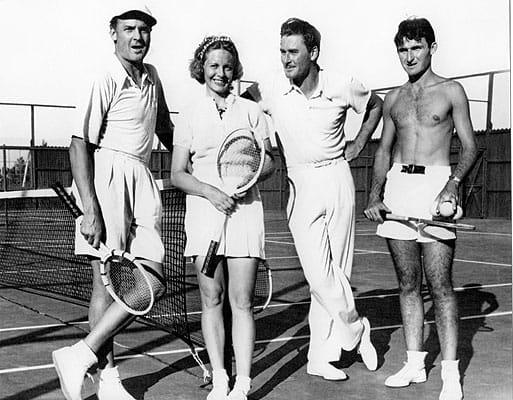
Photo Palm Springs Life
In 1934, Alice Marble’s first trip abroad ended dramatically. During her second-round Roland-Garros match against Cilly Aussem of German, the No. 3 seed collapsed and was forced to default. The situation became more dire when she was diagnosed with tuberculosis and pleurisy…and was advised never to play again.
The prognosis resulted in Marble developing a “Found a home…” relationship with The Racquet Club. Buoyed by her coach Eleanor “Teach” Tennant, who helped her escape from a sanitarium in Monrovia, California, and flee to Palm Springs, the resolute Marble, years later, revealed what her life was like in 1935 and ’36.
She detailed what she had gone through in Desert Sun features written by Gene Lube and Tracy Conrad. Marble talked about Tennant, (who among other things changed her forehand from a Western to an Eastern grip), becoming the teaching professional at The Racquet Club while she worked in the pro shop and began to cautiously play again… sometimes with Hollywood celebrities. She lived with Tennant over Hick’s Drug Store on Palm Canyon Drive and remembered that the club was enchanting.
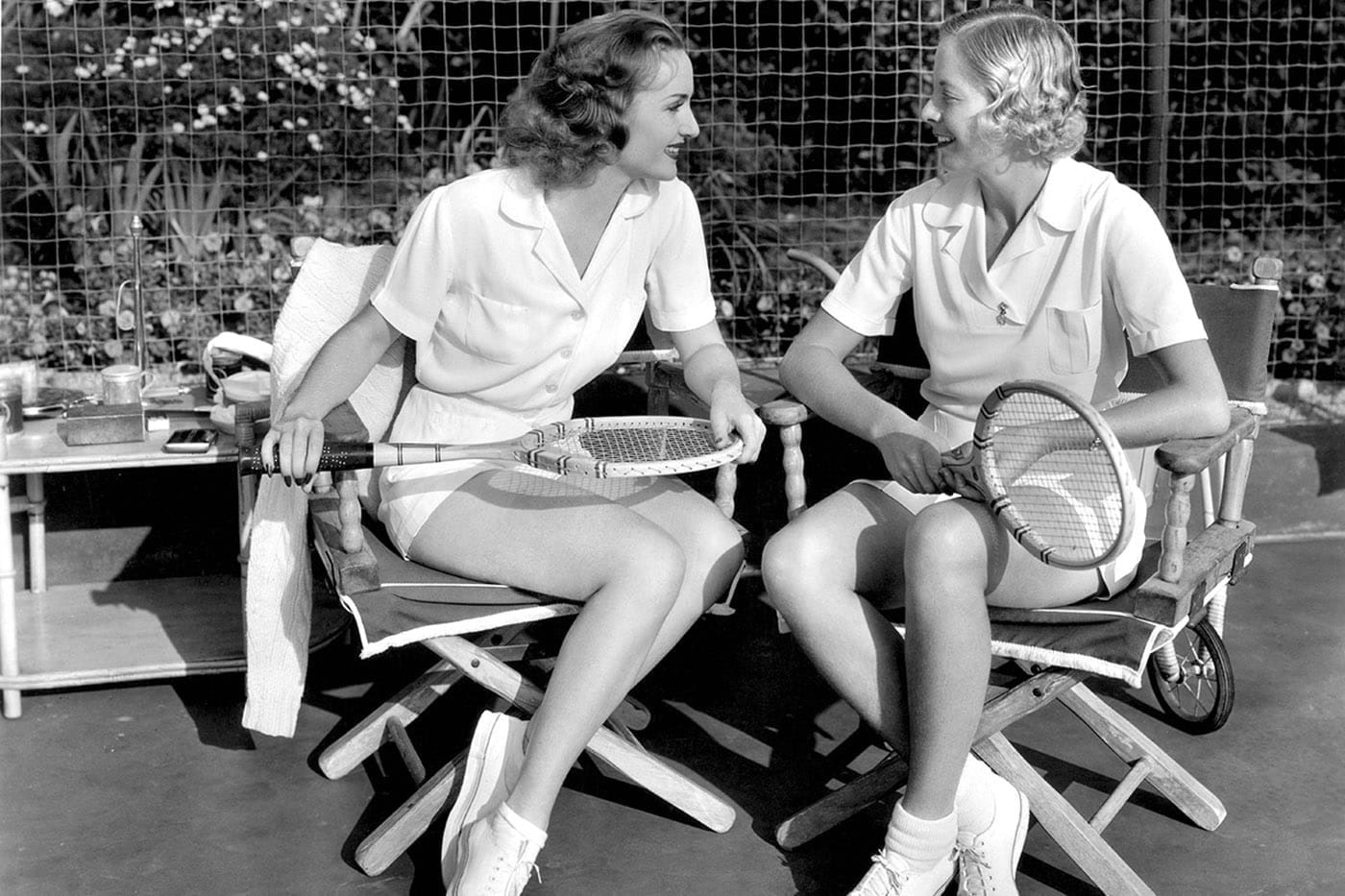
Photo Mashter Movie Archive
Apparently, those who made The Racquet Club fascinating could be high-spirited and unrestrained which led the reserved Tennant to be even more cautious.
Try as she did, Tennant was unable to keep her protégé from becoming Carole Lombard’s close friend. The actress was fun-loving, cordial, occasionally foul-mouthed, but a genuinely caring individual. In fact, she gave Tennant the nickname “Teach”.
It is rumored that Lombard, because of the lengthy recovery she endured after an automobile accident in 1927, shared those experiences with Marble as she made her way back. (The windshield in the car Lombard was riding shattered. The flying glass cut the stunning actress’ face leaving her left cheek scarred.)
In the spring of 1936, Marble, who would eventually become a Palm Desert resident, returned to competition… Fittingly, almost scripted, her comeback took place in a Southern California Tennis Association tournament held at The Racquet Club. In the final, she defeated Gracyn Wheeler, who was No. 6 in the US Women’s rankings.
Over the years, the facility’s distinctiveness has been thoroughly documented. Speaking with Desert Magazine, Farrell admitted, “We soon realized we didn’t have enough courts, so we built two more. And when you have four tennis courts, you have to have some accessories — like patios, club house, and boys’ and girls’ rooms. Then the fellows wanted to have some drinks, so we put in little lockers. Finally, we put some showers out back, and then we dammed the irrigation ditch to make a swimming pool. Before we could turn around, our little tennis hangout was all grown up.”
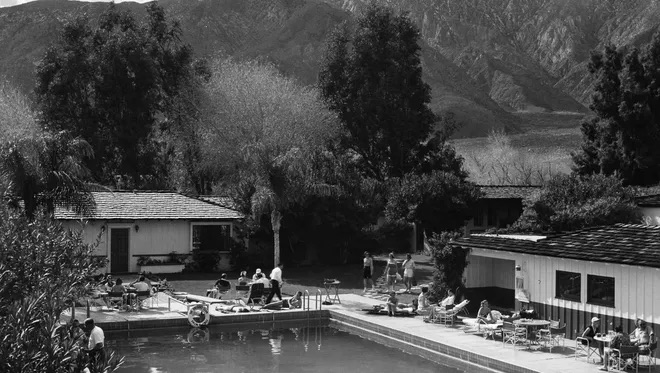
Photo Desert Sun
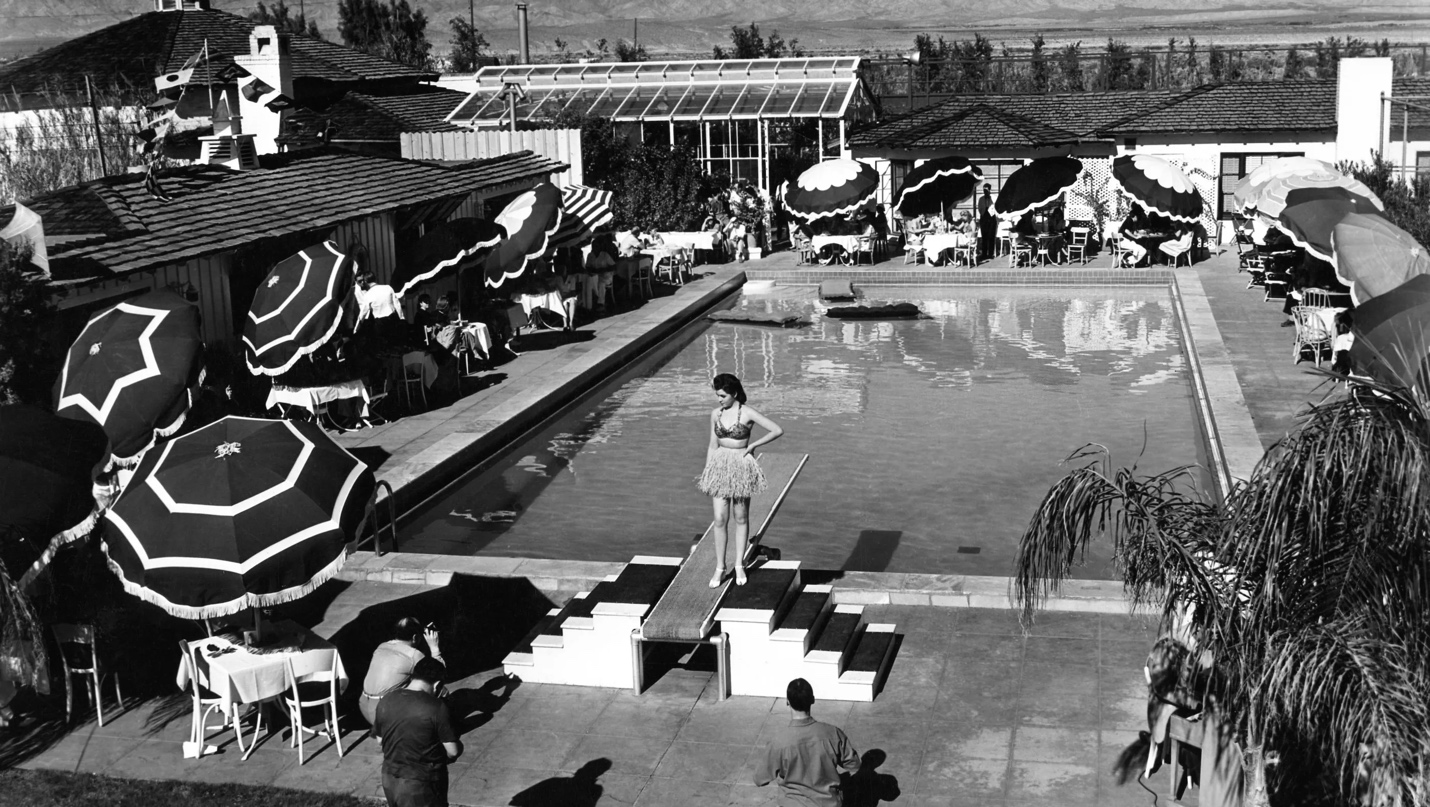
Photo Palm Springs Historical Society
(The pool was added in 1935. The quickly lauded Bamboo Room, a restaurant/bar, was created in 1937. Guest cottages became an amenity in 1946; Spencer Tracy always stayed in No. 19 and Clark Gable had a cottage named for him. More noteworthy, by 1936, all The Racquet Club memberships had been sold and there was no longer a waiting list.)
In the 1990s, historian Sally Presley Rippingale wrote, “The Original Racquet Club of Palm Springs: Where Everything Old Is New Again”. In the book, she revealed that during the 1940s and ’50s, Palm Springs was internationally known for the tennis it offered top players along with being an off the beaten path vacation spot.
She noted, “There was The Tennis Club and The Racquet Club. They were both private clubs and one must be recommended by a member or invited by a member for a visit there, but The Racquet Club had something that The Tennis Club would never have the acceptance and patronage of the glamorous movie crowd.”
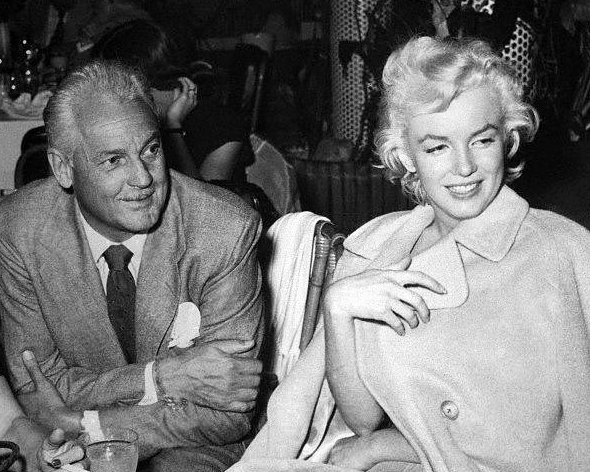
Photo davidlansing.com
Allegedly Marilyn Monroe was discovered at The Racquet Club after she was photographed by Bruno Bernard in 1947 lounging around the pool.
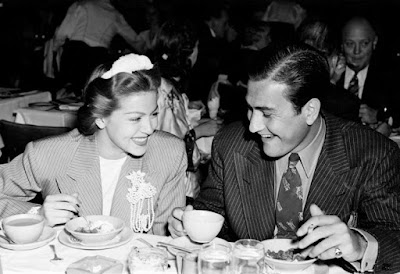
Photo Lady Eve’s Reel
“I remember the Charlie Farrell Racquet Club” Allen Fox said. “I won the Boys’15 mid-Winter tournament. I defeated Richard Mosk in the final…He was psyched out.”
No wonder…Fox was living in Tucson, Arizona where there was little competition which was the reason he came to Southern California for Christmas vacation. As he remembered, “I hung out all day at the Los Cienega courts in Beverly Hills. There were some pretty good players…That’s where I met Richard. I practiced with him, and he told me about a junior tournament in the desert. I decided to play, and I went with him.”
The “Psych out” stemmed from the fact at Kalamazoo that summer, (the site of the USTA Boys’ National Championships), he had gone three sets with Butch Buchholz, one of the best juniors in the country. Fox continued, “…That Spring I had been badly beaten by Barry Edberg at an Arizona tournament. He lobbed everything until I missed…So, that’s what I did against Butch. I won the second set, but lost the match… I guess it meant I could play a bit…and I had never played on clay before.
“When they found out about Kalamazoo, my reputation at Los Cienega grew which psyched Richard out in The Racquet Club final.”
(The USTA Boys’ National Championships changed the younger age division from 15 to 16 in 1962 and the next year was the last the tournament was played on red clay.)
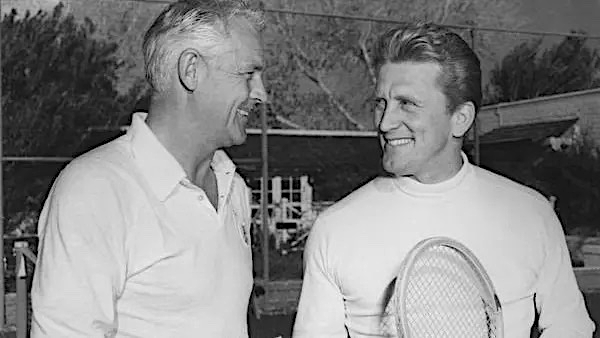
Photo Desert Sun
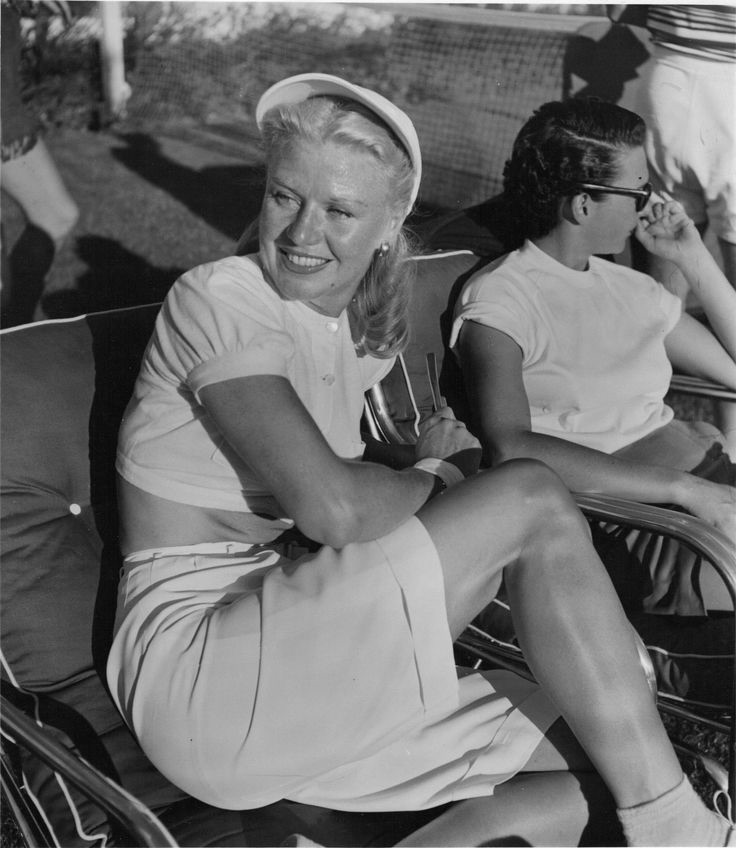
Photo Pinterest
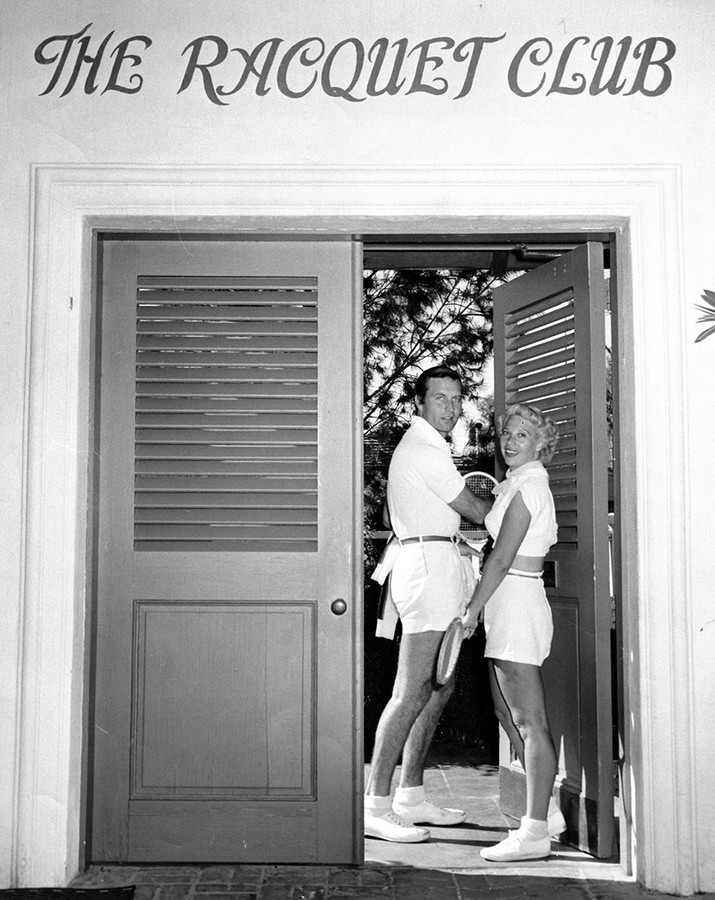
Photo Clio
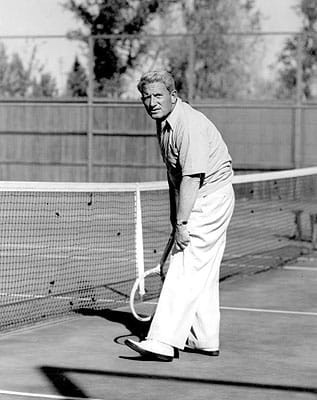
Photo Palm Springs Life
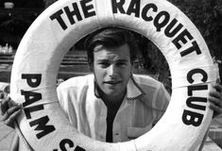
Photo Pinterest
Farrell’s expansive list of Hollywood visitors included Bing Crosby, Kirk Douglas, Sammy Davis Jr., Clark Gable, Rita Hayworth, Katharine Hepburn, Bob Hope, William Powell, Ginger Rogers, Dinah Shore, Frank Sinatra, Elizabeth Taylor, Spencer Tracy and Robert Wagner. In the 1960s, the celebrities were matched by an impressive collection of intercollegiate guests including Arthur Ashe, Charlie Pasarell and Dennis Ralston.
Presley Rippingale’s anecdote provides wonderful insight about The Racquet Club … “Bartender Tex George, who was on the job for 39 years, liked to tell a story about the day a woman, a member’s guest, sat down at the bar, ordered a cocktail, looked over her surroundings and asked him if there were any movie stars around. Tex turned to the man sitting a couple of stools away from her and asked if he’d seen any celebrities. ‘Nope,’ replied Clark Gable, ‘haven’t seen a single one.’”
Fox admitted, “Famous people were there all the time. It was glamorous…one of the glitzy, high-end clubs that Southern California had along with the Balboa Bay Club and the Los Angeles Tennis Club. It was one of the places they used to have an Invitational tournament every year. When I was in graduate school at UCLA, I played Charlie (Pasarell) in the men’s final. It was in the early ‘60s because Charlie was a UCLA undergrad.
“I won the first set then slipped going for a backhand in the second and dislocated my left shoulder. There were no trainers in those days, so we were finally able to put my shoulder back in the socket. It was painful when it was out but once it was back in it was ‘a little wiggly’ but it didn’t affect my play. I think it may have bothered Charlie more that he couldn’t beat me, after I had been hurt, than the injury bothered me.”
Fox added, “Charlie is such a nice guy…”
Willie Mays’ passing on June 18th brought back a wealth of vacation memories. In my case it was Easter not Christmas Vacation. Don Ross, a family friend, who thanks to his PR work in professional sports, had connections which provided entrée to a “One off” experience…
I spent time with Mays, who was on his way to a Hall of Fame Major League Baseball career, because his team, the Giants, was playing exhibition games against the Angles, who were using Palm Springs as a Spring Training location for the first time.
The city was nothing like it is today. There were around 11, 000 residents… (this after City Engineers had demolished the homes of the Blacks and Hispanics who lived in the Section 14 area). Restaurants and malls didn’t occupy block after block. The streets were uncongested because there was little traffic. There were several golf courses and homes of the well to do but, otherwise, Palm Springs was open and uncluttered.
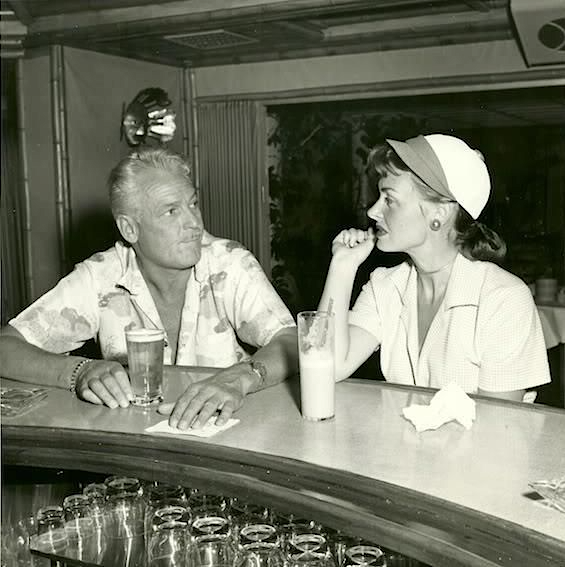
Photo Pinterest
During the vacation I went to The Racquet Club for the first time. Ross was a close friend of Tony Owen, who created the successful Donna Reed television show…and happened to be Reed’s husband. He was a club member which gave me access and led to my meeting Julie Copeland, (who became a cherished friend). She was The Racquet Club’s acclaimed hostess, and she introduced me to tennis in a rarefied setting.
For me, playing amounted to time spent at the North Hollywood and Vanowen Parks in the San Fernando Valley… where conditions were often chaotic because they were public courts. Because of my background, The Racquet Club, at first, was unnerving. The atmosphere was dignified; there was decorum. Boundaries were clearly defined. Should anyone cross the line… One did not want to hear about a transgression from Copeland.
Thanks to her Joie de vivre, I was accepted… It didn’t matter that I was self-taught and had just started to compete. She set up matches and encouraged me after I had put on a “Flog balls around the court…” exhibitions. After some of these showings, she found time to visit…when all I wanted to do was hide…and talk about what she had seen… then, almost mischievously, she would say, “You have another match in an hour…”
I now realize how fortunate I was…and it had nothing to do with the “Famous people” I met, sitting in the patio area and watching the action on the other courts or swimming in The Racquet Club pool. Looking back, the enormity of what took place is treasured…As is the sensation of walking through The Racquet Club’s entrance for the first time…
Easter Vacation in 1961 was truly remarkable…
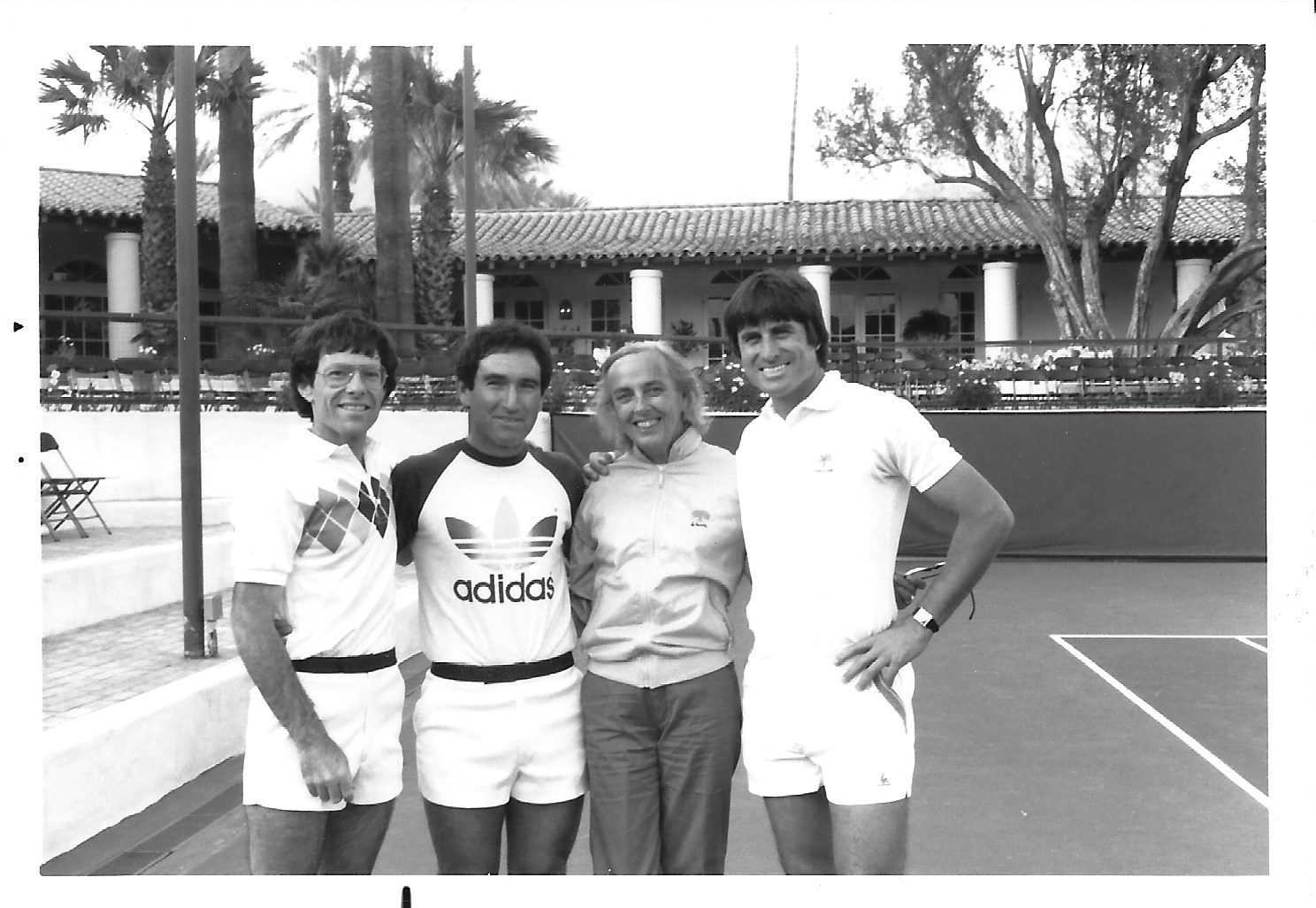
Photo Mark Winters Collection
Final Curtain…
In 1937, Farrell bought Bellamy out and became The Racquet Club’s empresario… Actually, his wife, Virginia Valli was the architect of the club’s storied development. Having grown weary of being the owner, Farrell sold the club in 1959 but the agreement contained a clause stating that he would remain actively involved in the club’s operation.
That didn’t happen as Farrell told the Desert Magazine in 1963, “And so, the old gang split up. Some of the big stars have sort of taken to the hills…”
By the 1970s desert tennis had changed dramatically and The Racquet Club’s once lofty status had become part of “Remember when…” conversations. The end came in 2014 when a fire incinerated the property (which remains a ruin).
When The Racquet Club’s final curtain dropped, there was no applause. The historic location became a reality, along with Palm Springs itself, because of Charlie Farrell and his coterie of Hollywood friends. When it succumbed, only a few from the community talked about the wake…
